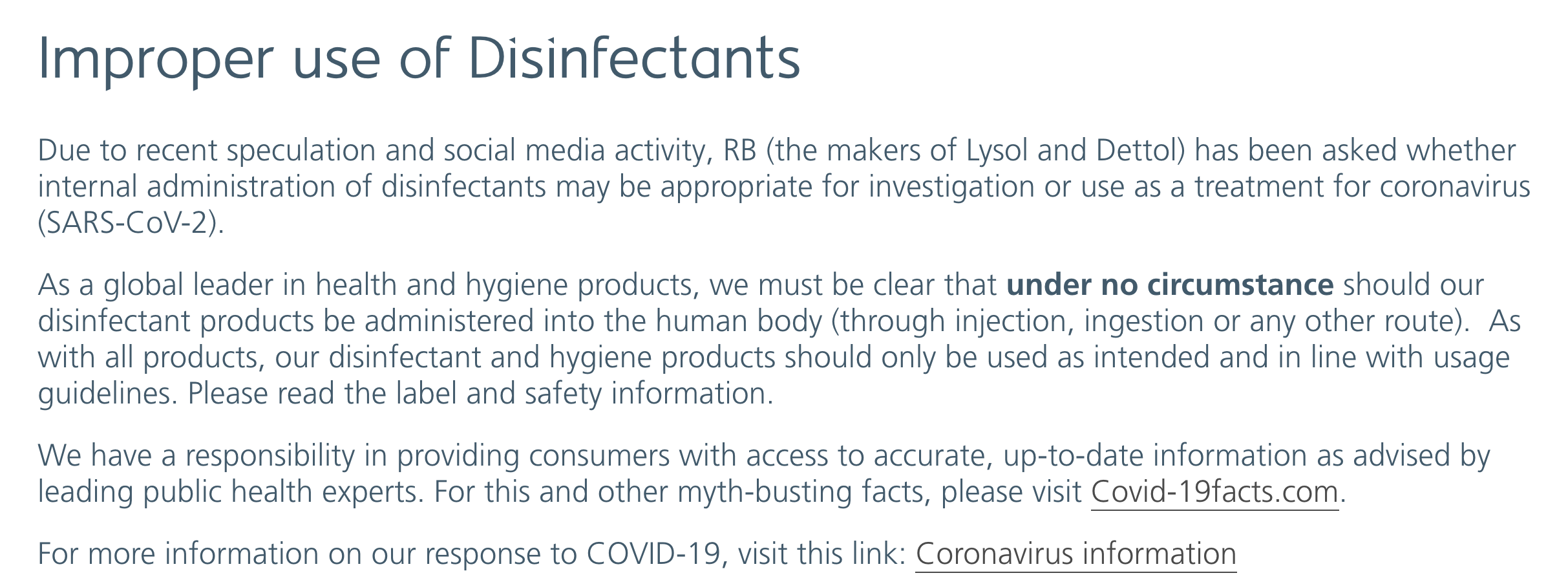Clarity. It’s a shame no one explained its benefits to the 45th President of the United States. Instead, he suggested that a possible way to combat coronavirus might be to inject disinfectant into the human body.
A day later, his spokesperson said he was being sarcastic. This is a bit like having to explain a joke. Maybe the President needs to take sarcasm classes alongside clarity lessons.
Good messaging is clear, distinct and powerful. Instead, the President has undermined his scientific advisers, undermined his own authority and confused his audience.
This is drive-by briefing. Everything feels off-the-cuff, like a series of passing remarks only given credence because they’re spoken by the leader of the free world. He then tries to highlight the work of his office by mentioning the possibility of experimental treatments – there’s no reassurance and no direction for the American people. Sure, his style is distinctive, but this is messaging that’s all about promoting him and his administration –almost wholly ignoring the audience .
As a matter of public health, cleaning brands were forced to respond. It wasn’t as enormous an undertaking as you might expect. Here’s why.
The UK owner of brands like Dettol and Cillit Bang was quick to respond to the President’s words. It issued a statement on its company landing page, detailing the harmful effects of the improper use of disinfectants. Just consider that sentence for a second. They also linked to a myth-busting page about COVID-19.

Cleaning brands have been conducting rapid-response marketing since the start of the coronavirus. In a smart move from the company that gave us Barry Scott, Reckitt and Benckiser donated cleaning products worth £5.5 million to China way back at the start of the health crisis.
In the face of the presidential comments, another brand, Clorox, added “Will ingesting bleach help kill coronavirus?”, to the top of their FAQs. It doesn’t get any simpler. A few days before the fateful press conference, the company tweeted a video explaining how to use its products correctly to help combat coronavirus.